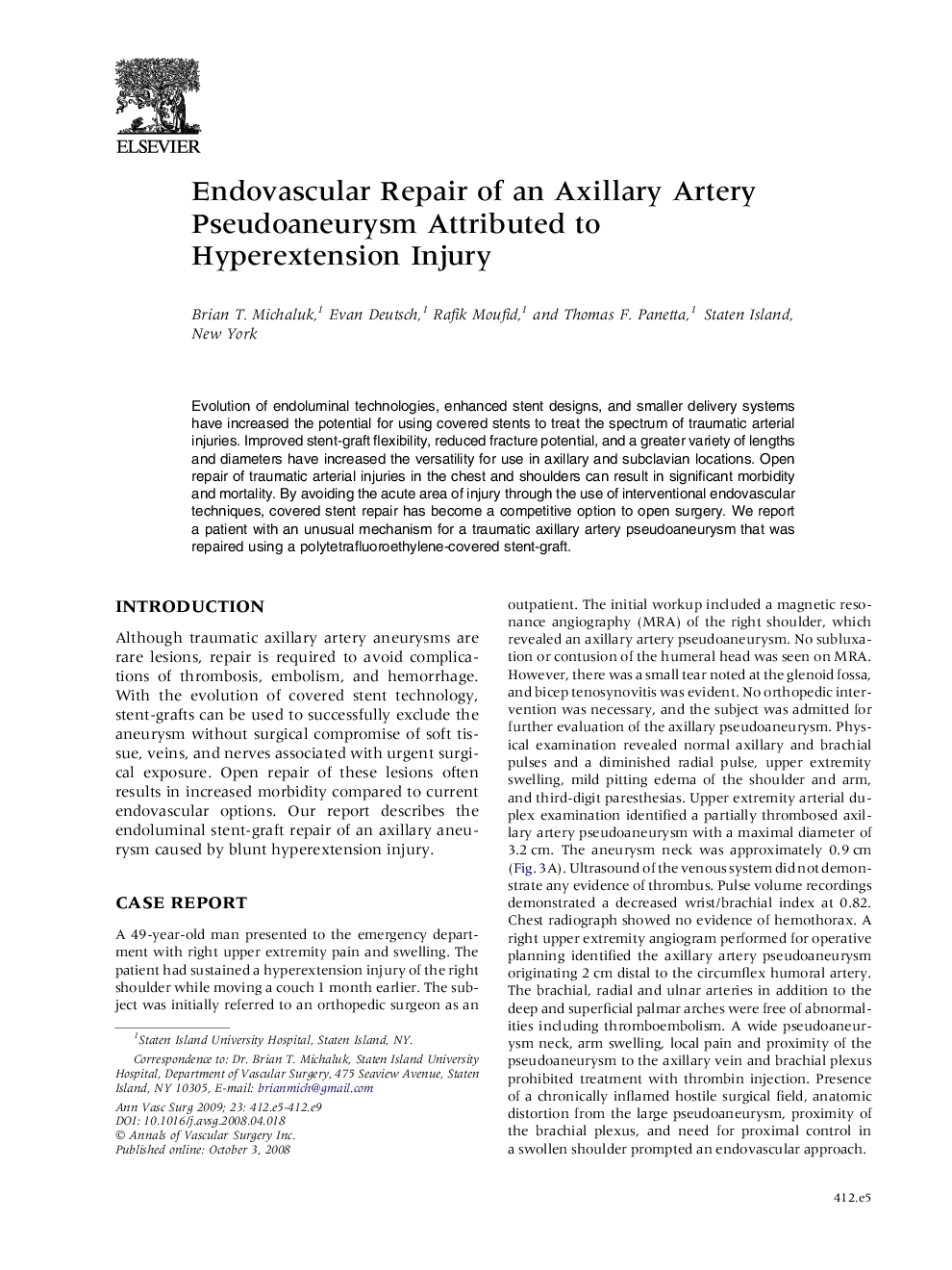| Article ID | Journal | Published Year | Pages | File Type |
|---|---|---|---|---|
| 2887429 | Annals of Vascular Surgery | 2009 | 5 Pages |
Abstract
Evolution of endoluminal technologies, enhanced stent designs, and smaller delivery systems have increased the potential for using covered stents to treat the spectrum of traumatic arterial injuries. Improved stent-graft flexibility, reduced fracture potential, and a greater variety of lengths and diameters have increased the versatility for use in axillary and subclavian locations. Open repair of traumatic arterial injuries in the chest and shoulders can result in significant morbidity and mortality. By avoiding the acute area of injury through the use of interventional endovascular techniques, covered stent repair has become a competitive option to open surgery. We report a patient with an unusual mechanism for a traumatic axillary artery pseudoaneurysm that was repaired using a polytetrafluoroethylene-covered stent-graft.
Related Topics
Health Sciences
Medicine and Dentistry
Cardiology and Cardiovascular Medicine
Authors
Brian T. Michaluk, Evan Deutsch, Rafik Moufid, Thomas F. Panetta,
